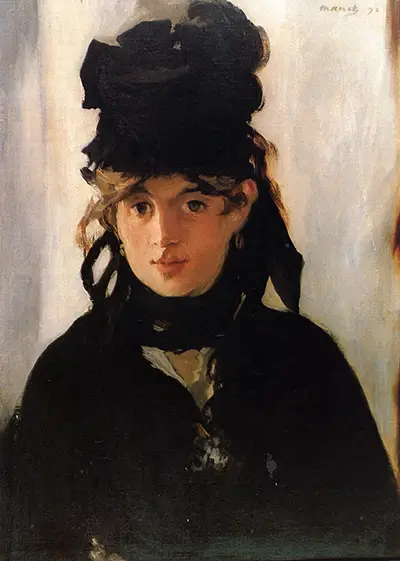 Buy Art Prints Now
Buy Art Prints Nowfrom Amazon
* As an Amazon Associate, and partner with Google Adsense and Ezoic, I earn from qualifying purchases.
Berthe Morisot left behind one of the most influential careers of any female artists but underwent significant challenges throughout her life. This biography outlines the key moments in her career.
She was born on the 14th of January, 1841 in Bourges, central France. She was born into a prestigious family and otherwise would probably never have been able to produce the artistic impact that she did. This advantage would balance out some of the difficulties that she endured as a female artist - a woman in a man's world. Her family was well connected, with her father holding a key goverment post whilst her grandfather was the world famous artist Jean-Honoré Fragonard who starred in the Rococo art movement.
Family would become a key element to the Morisot's paintings, featuring in a number of her most famous works. Her sister, Edma, would model for several portraits and was actually a highly skilled artist in her own right for many years. She reluctantly turned her back on a career in art in order to devote all of her time to her family once she married and had children. Berthe followed a similar course but would never give up her career as a painter and found a way to balance all of these demands successfully. Edma can be seen in paintings such as The Cradle (with her daughter) and The Mother and Sister of the Artist.
The two sisters were not allowed to join most institutions because of their gender but were able to find alternative routes to develop their skills and artistic knowledge. In line with a host of famous names over the centuries, they went to the Louvre to study the masters. It is believed that they also specifically used the teachings of Jean-Baptiste Camille Corot in order to understand how to put outdoor scenes together. This genre would later appear in some of Berthe's most famous paintings and so this period of study was essential to her later career. She was considered ready to display work at the Salon in 1864, which is a key moment in any French artist's development.
Several years later Berthe would meet two artists that would figure prominently in her career, firstly Henri Fantin-Latour, and secondly Edouard Manet. The former introduced her to the latter and this would push her life down a new path that would leave a significant impact on both her career but also her personal life. Morisot started to prefer the style of Manet over her previous influence, Corot, and from that point onwards her work started to move towards what we later understood to be the Impressionist style, putting her in the same category as the likes of Degas, Renoir, Monet and Pissarro.
As part of this new group of modern artists, she decided to stop submitting work to the Salon after a decade of doing so, choosing to concentrate instead in developing the profile of this talented group of painters. Monet decided to continue seeking success at the Salon but the others made a clean break and put together their first Impressionist exhibition - Morisot contributed The Cradle, The Harbor at Cherbourg, Hide and Seek and Reading. From this point onwards she had signed up to the journey of the Impressionists and would follow this route whereever it lead them in the future. Morisot would become the most famous female member of the group and also highly regarded in her own right. She was later accompanied by American artist, Mary Cassatt.
Berthe would later marry one of Manet's brothers, Eugene. By this point she was now financially set up for the rest of her life and could concentrate on her career without any other worries. She later produced a portrait of her new husband whilst on their honeymoon, titled Eugène Manet on the Isle of Wight. They would then later have a daughter. During her career Morisot would take in a great variety of content and genres, though always sticking to the Impressionist style once she had reached that point in her development. There were portraits, still life studies, plenty of domestic scenes and also some produced outdoors. She remains most famous for her work in oils, naturally, but she was also involved in watercolours plus pencil and pastel drawings.
Eugene, her husband, sadly died in 1892. Morisot continued to produce critically-acclaimed work that would still struggle to sell on the open market, but she was never under pressure financially. This problem was experienced by most of the Impressionists so was not simply due to her gender, more so that their work was ground-breaking and taking time to break into the mainstream. Shortly before her career and life ended in 1895, one of her paintings was purchased by the French Government which perhaps marked the changing times which ultimately brought about her rising reputation.



